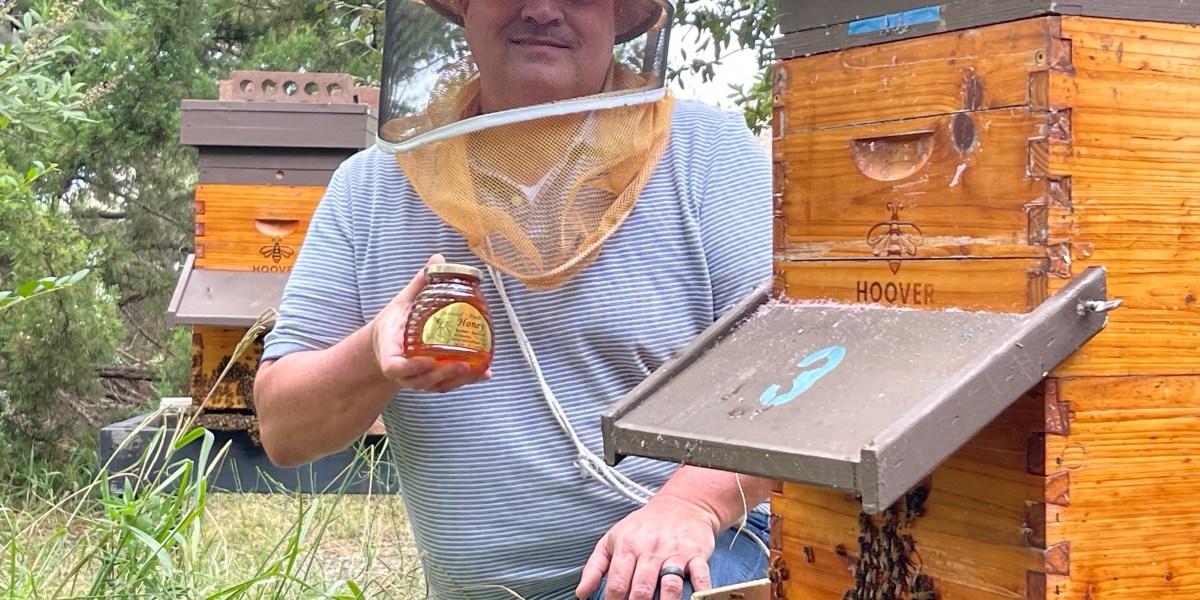

In my four decades as an engineer, one of my most consequential steps was becoming a beekeeper. My role at AT&T centers around leading a team of engineers who introduce new technologies, and so many of the dynamics of beekeeping are relevant to managing innovation teams.
Bees, being pollinators, help make up to one out of every three bites of food that humans eat. Honeybees achieve this through a distinct governance structure in which the queen sets the tone for the characteristics and culture of her hive, but she wisely leans on counsel from an older generation of worker bees—acting as the board of directors that guide the rank and file of the colony.
Beekeeping distills the key tools you need for managing innovation cycles: how to support growth into new levels of scale; shepherding the team’s strengths and development; and the importance of establishing a culture of enthusiasm. But perhaps more unexpected than anything else, you learn not to overly focus on the honey, and instead to keep your primary focus on building the best box for the bees.
The box is your organization
Why is the box the North Star? Why not the honey? Well, if you’re just thinking about the honey and not setting up for future harvests and talent pools, the hive would have no food reserves and could suffer from massive defections. If you don’t grow the box when it gets to about 80%, half your bees will leave and start another hive because they think the job is complete. If you make it too big, they will exhaust themselves. We learn six key innovation lessons from prioritizing the box rather than the honey.
- Promote and develop talent: When your talent reaches 80% of mastering their role, you should promote them and have them train someone into their old role. They’ve shown they can be successful in your organization, and you want to make clear that yours is an environment that delivers perennial learnings. Bees naturally want to swarm. That’s how they grow. But amazingly, once the nectar starts, bees don’t swarm. That’s because they have a really busy job and are dialed in.
- Scaffold for success: Better scaffolded bees will find better honey. We know that bees build excess comb in a space larger than 3/8 inch. They’ll also fill any space less than 1/4 inch with propolis (their antifungal hive structural material). So, we keep their “bee spaces” between that 3/8 inch and 1/4 inch. In a company, your innovators need room to refine their role, but they also need clear responsibilities and goals—even if the goals are changeable.
- Embrace continuous learning: A bee’s strengths change over time. They excel at making wax until about eight weeks old, then move on to new roles. Bees are adept at learning and can have multiple jobs in their lifetime, ranging from nurse bees and guard bees to foragers. Each role is critical, and bees are promoted through these positions as they age. The lesson? Managers should consider these changing strengths when assigning roles and seek out when employees are ready for a progression.
- Focus on creating lasting value: Much like focusing on the honey can distract you from thinking long-term about the hive, an overemphasis on current products may hinder disruptive innovations. For instance, solving internet load issues in 1994 led to high-speed internet and the smartphone revolution. Similarly, if we were too focused on the benefits of Wi-Fi alone (the current honey), we would have missed the need for seamless connectivity across Wi-Fi, cellular, and satellite networks. This convergence led to the development of fiber-optic technology, which is now the backbone of high-capacity communication networks. An enterprise mindset is crucial here. We invent the future when we push the boundaries of the present and challenge the status quo. Each individual’s efforts should align with the broader goals of the organization and focus on creating lasting value.
- Always have a backup beekeeper: Consistency is key when checking in with your hive. I do it every few weeks. Always have a backup beekeeper (or department head) to ensure steady management, as innovation requires a continuous and steady hand. While the queen leads, the department heads, akin to senior worker bees, are crucial for guidance. When launching a new innovation, these senior workers play pivotal roles in two stages. First, they test your idea, evaluating its potential, economics, supply chain support, infrastructure needs, timing, operational impact, and its ability to change lives. Once the idea passes this evaluation, these leaders are essential in rallying the team and driving the execution of the innovation.
- Foster a culture of enthusiasm: When bees bring nectar back to the hive, they must sell it to the other bees. The attention their nectar receives depends on the excitement with which they present it. Your team should feel safe to innovate, act boldly, and shout, “I have an idea!” even if it turns out to be wrong. In an incubation environment, there should be no fear of “crying wolf”—only buzzing bees focused on driving innovations that contribute to collective success. This means nurturing a culture where everyone is enthusiastic about their bold ideas, and where smart risks and fast failure are part of a larger strategy aimed at creating long-term value and sustainability. This goes beyond the “fail early” mindset; sometimes, a truly disruptive idea needs extra room to develop. The key is to create an atmosphere where the response is “how could we make this better, if we were doing it again?” rather than causing embarrassment.
As with many things in life, focusing too much on the immediate goal (honey) doesn’t optimize long-term success. Instead, healthy architecture and attentive systems-level management are what yield lasting results.
Read more:
The opinions expressed in Fortune.com commentary pieces are solely the views of their authors and do not necessarily reflect the opinions and beliefs of Fortune.
In our new special issue, a Wall Street legend gets a radical makeover, a tale of crypto iniquity, misbehaving poultry royalty, and more.
Read the stories.















